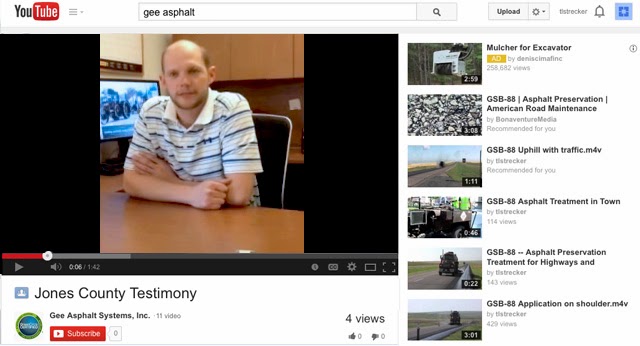Freeze-thaw-moisture, freeze-thaw-moisture, freeze-thaw-moisture.
All across the nation, communities are dealing with an epidemic of potholes, possibly anticipated in aging streets, but also showing up in poorer quality repairs that just didn’t hold up under extreme winter conditions.
“Still, that (potholes) wouldn't be as big a problem had the nation invested more up front,” says Larry Galehouse, Engineer and Director of the National Center for Pavement Preservation.
"What people have to understand is you can't have a pothole without first having a crack in the pavement surface. Agencies have been cash-strapped for a number of years, and now it's all coming home to roost."
"If you've got a pavement in poor condition that's got a lot of alligator cracking ... where water is getting into the pavement and freezing and thawing, it's going to break up the structure," says Kevin J. Haas, Traffic Investigations Engineer, Oregon Department of Transportation, Salem.
And to add weight to their statements, it’s no coincidence the American
Society of Civil Engineers gave America's infrastructure (roads) a D
last year.
And, now communities following Worst First Maintenance Strategies are just trying to keep up with the repairs and pay for it any way they can.
In New York City, 136,476 potholes have been patched since Jan. 1. — compared to the just under 57,000 by Jan 1 in 2013.
Closer to home, Cedar Rapids, Ia estimates the need to fix 100,000 potholes. So far the city has used over 120 tons of fill material. Paid for by local option sales tax, the city has purchased three new pothole mix spreaders for around $65,000 each and upgraded to a longer lasting premium mix—20% more expensive.
Still other communities are calling on volunteers to fill holes quickly with cold mix until permanent road patches can be made in April.
Better Quality vs Throw-and-Roll Methods:
“If a few simple and cost-effective measures are applied with each repair then there may be less need for as many repeat repairs and savings could be in the millions annually.”
— Mujib Rahman, co-author, Nottingham Trent University study, England.
The study found that applying a coat of bitumen emulsion between two layers of asphalt significantly improved its resistance to further cracks and confirmed a hot mix repair — in which the asphalt was heated to 284 degrees or higher — was the best option for fixing holes 1 inch and deeper.
Potholes Cause Property Damage:
TRIP, a nonprofit organization that researches surface transportation issues, estimated an average urban driver pays out $377 a year in repairs — or a total of $80 billion nationwide, with many flat tires caused by potholes. (based on 2013 data)
Keeping the Good Pavements Good:
Trying to put this all into perspective Larry Galehouse gives this statement, “Americans pay about $21 a month on average in state and federal road taxes — a fraction of what they pay for cable television or a cell phone. And yet what is one of our most (personal) expensive investments out there? It's our automobile. And we're wrecking our automobiles because we're hitting potholes ... The key is not fixing them. The key is preventing them."
Wouldn’t it make more sense to spend a dollar to preserve newer pavements, keeping them like new longer, rather than spending $10.80 to patch, repair and replace?
 * Installed in 2001
* Installed in 2001 













